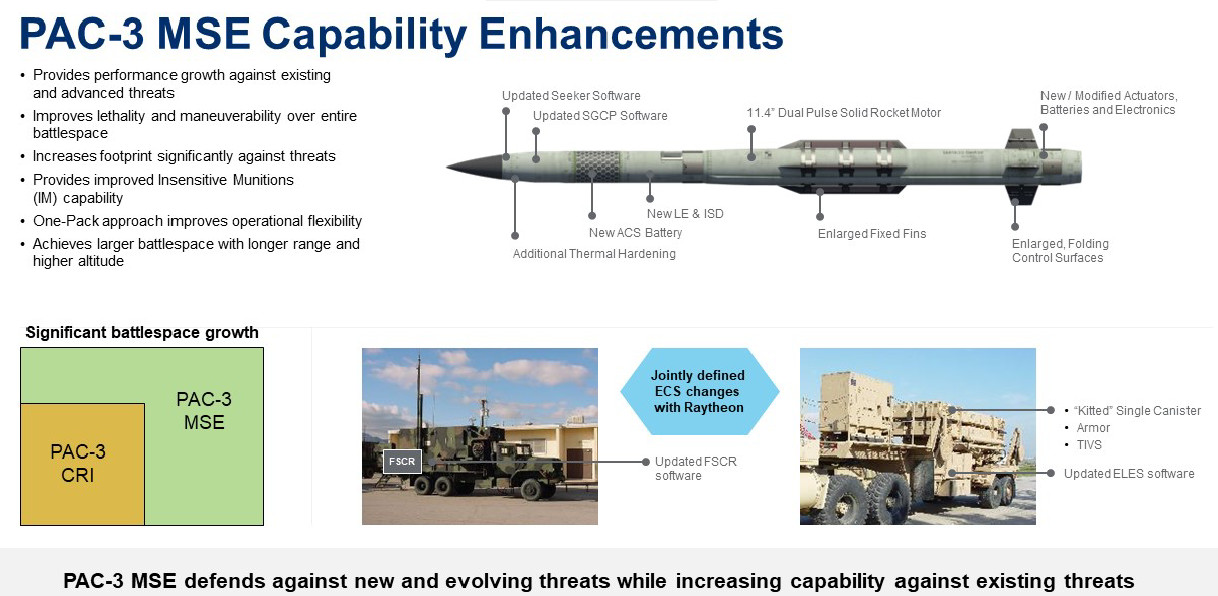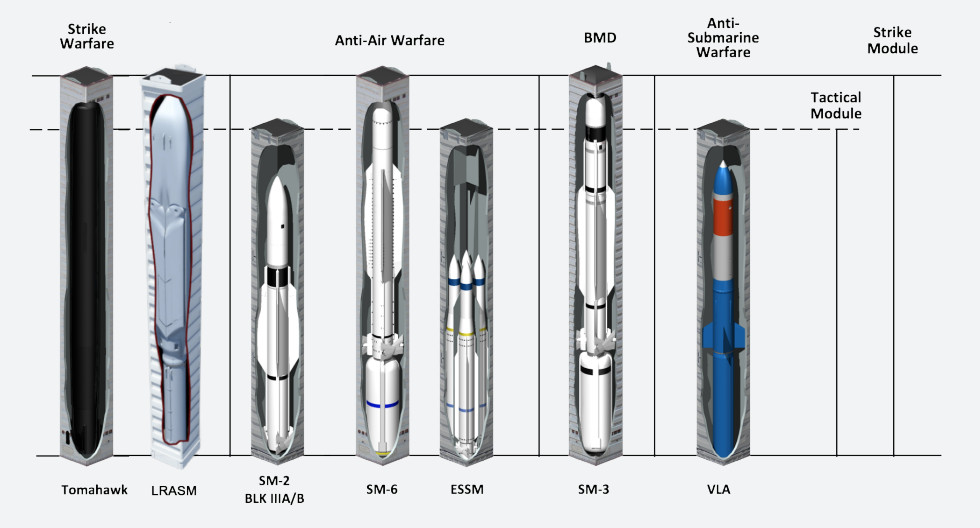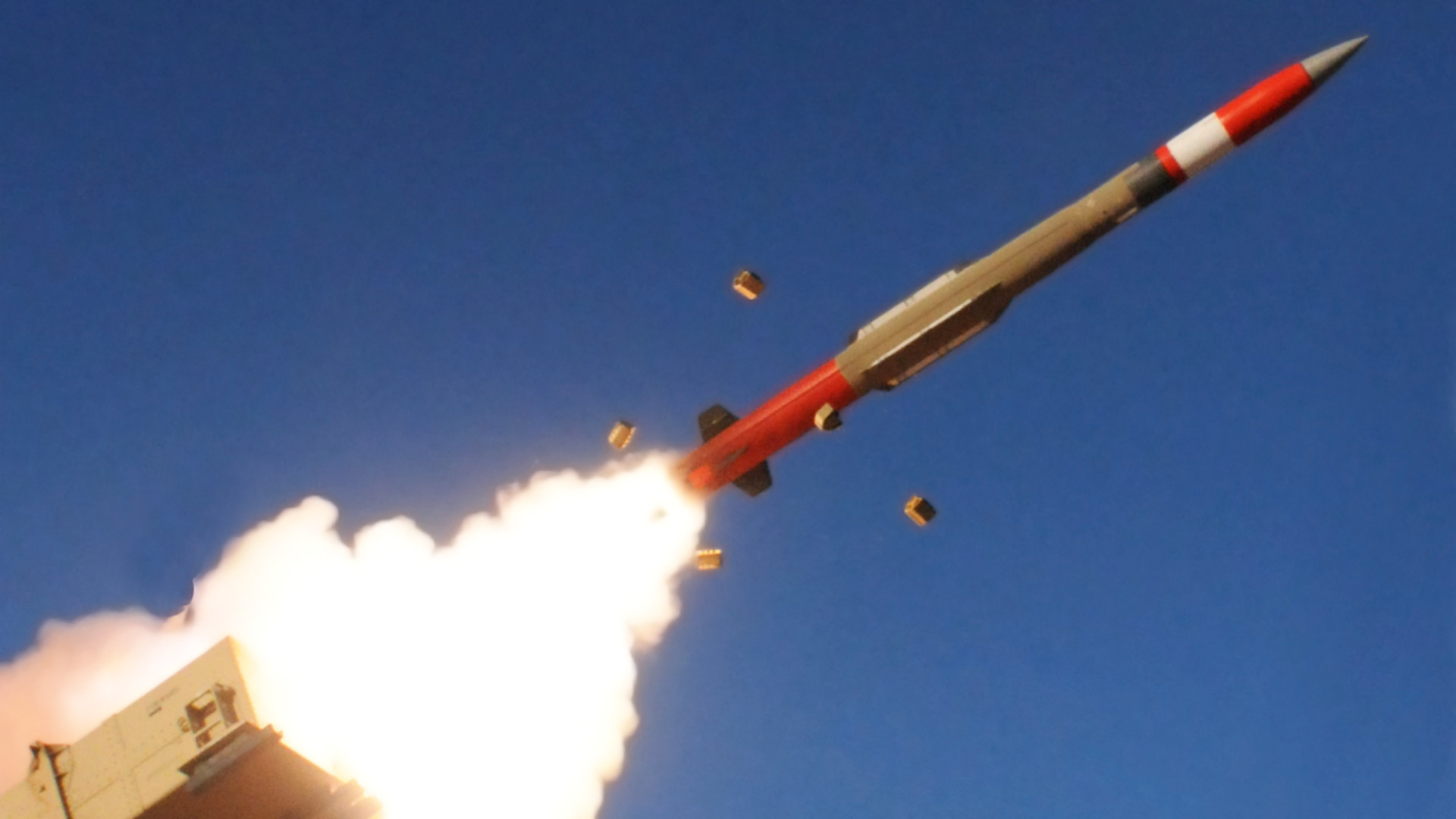Lockheed Martin has presented a new way of employing the company’s highly capable Patriot PAC-3 Missile Segment Enhancement surface-to-air missile, firing it from a Mk 41 Vertical Launch System cell. This combination would open a door to potentially adding this missile to the arsenal of dozens of current and future warships in service around the world, including with the U.S. Navy. In addition, it could allow any ground-based variant or derivative of the Mk 41, such as ones the U.S. Army and U.S. Navy are developing, to fire these interceptors, in addition to various other missiles.
A model of a PAC-3 Missile Segment Enhancement (MSE) missile being fired from a Mk 41 Vertical Launch System (VLS) cell is currently on display at the Surface Navy Association’s annual National Symposium, which opened today in Northern Virginia. Aaron-Matthew IL, a freelancer covering the event for Naval News, shared pictures of the display on Twitter.
A QR code on a placard seen at the event leads to a website with more information about the PAC-3 MSE missile, but no additional details about the combination of that weapon with the Mk 41 VLS. The War Zone has reached out to Lockheed Martin for more on this development.
The two separate components are, of course, very well known.
PAC-3 MSE, which entered full-rate production for the U.S. Army and other customers in 2018, is the latest interceptor in the Patriot family and can be employed against aircraft, cruise missiles, and certain lower-tier ballistic missiles. Unlike earlier Patriot types, all versions of the PAC-3 are smaller, so-called hit-to-kill weapons that destroy their targets by physically impacting them, rather than with an explosive warhead of some kind. The MSE variant incorporates features that give the interceptor additional performance, including increased maneuverability, and improved accuracy, as you can read more about here.


Variants of the Mk 41 VLS, another Lockheed Martin product, have been in service with the U.S. Navy and other naval forces around the world since the 1980s. The Mk 41 is already capable of firing a wide array of different surface-to-air, anti-ship, and land-attack missiles, depending on its exact configuration. Lockheed Martin also offers a bolt-on version of the Mk 41 that is designed to be readily integrated onto various types of ships and fires missiles obliquely.
It is worth noting that the standard PAC-3 MSE is 19 feet long, but it’s unclear whether this remains the same in the vertical launch configuration. It’s not clear if the PAC-3 MSE requires some kind of additional booster motor to work with the Mk 41, which would increase its overall length. If the length is unchanged, it could be compatible with both the “tactical” and “strike-length” versions of the Mk 41, which have launch cells that are just over 22 feet and 25.25 feet long, respectively.

The PAC-3’s smaller form factor compared to earlier Patriot missile types already allows more interceptors to be loaded on standard ground-based launchers.

No matter how the PAC-3 MSE might need to be configured for vertical launch, being able to fire it from even just strike-length Mk 41s opens up an entirely new naval market for the missile. The interceptor’s capabilities against incoming ballistic threats might be particularly attractive given the rise in anti-ship ballistic missile developments, especially by the Chinese military, in recent years. There are, of course, already various surface-to-air missiles, including ones with anti-ballistic missile capabilities, available for use together with versions of the Mk 41.
Beyond the naval realm, the combination of the PAC-3 MSE and the Mk 41 opens up other new possibilities for ground-based applications. Both the U.S. Army and the U.S. Navy are developing ground-based capabilities based around road-mobile derivatives of the Mk 41 VLS. The Army’s trailer-mounted system, called Typhon, is currently intended to fire variants of the SM-6 missile, which have surface-to-air and surface-to-surface capabilities, and Tomahawk cruise missiles, land attack and anti-ship versions of which currently exist. The Navy has indicated that its containerized Mk 70 Mod 1 Expeditionary Launcher, which is designed to be readily loaded onto flatbed trucks and ships, is also intended primarily to fire these two types of missiles.


For the Army, being able to fire PAC-3 MSEs from the Typhon launcher could expand the flexibility of that system, allowing it to supplement or even eventually supplant the service’s existing dedicated Patriot launchers. The Army’s current Patriot system inventory is relatively small and in very high demand.
The Army is also in the process of fielding a new integrated command and control network for air and missile defense system from Northrop Grumman called the Integrated Battle Command System (IBCS), which could potentially be used to link a Typhon launcher loaded with PAC-3 MSEs to existing Patriot system radars or other sensor nodes. The network could tie the launchers to separate air and missile defense command and control centers, too. Last year, the Missile Defense Agency and the Army, in cooperation with Lockheed Martin, demonstrated the ability to fire PAC-3 MSEs using the Terminal High Altitude Area Defense (THAAD) ballistic missile defense system’s fire control architecture via IBCS.

Variants of Lockheed Martin’s own Aegis combat system, which you can read more about here, could provide a similar integrated backend. Versions of Aegis are already in use in naval and land-based applications.
These kinds of networking architectures allow for more distributed operations where launchers, sensors, and command and control nodes do not necessarily have to be collocated, which presents challenges for enemy forces and reduces the vulnerability of friendly units. In addition, off-board sensors can then be used to cue firing units to engage threats that they might not otherwise be able to detect and track with their own organic sensors, a concept known as “Launch on Remote.”
All told, combining the capabilities of the PAC-3 MSE with the highly adaptable and flexible nature of the Mk 41 VLS presents a number of intriguing possibilities. It will be interesting to learn more about Lockheed Martin’s plans for this pairing.
Contact the author: joe@thedrive.com
